Introduction
The CPM1A was widely used until its discontinuation in 2015. Despite being phased out, it continues to be present in machines due to its robustness. If there is a need for replacement, either for an upgrade or due to a breakdown, what would be the most suitable replacement?
A common alternative for a CPM1A is either the CP1E or CP1L PLCs. Many machines with a CPM1A often contain an encoder. Proper configuration settings, electrical wiring, and the use of a high-speed counter (if needed) must be established when connecting an encoder to a C-Series PLC.
This tutorial provides a setup guide for replacing a CPM1A with an encoder with either a CP1E or CP1L. Additional in-depth guides can be found through the following links:
- CP1E CPU Unit User's Manual
- CQM1/CPM1/CPM1A/SRM1 Programming Manual
- Replacement Guide from CPM1A to CP1E
Electrical Wiring (CPM1A and CP1E)
CPM1A Encoder Wiring
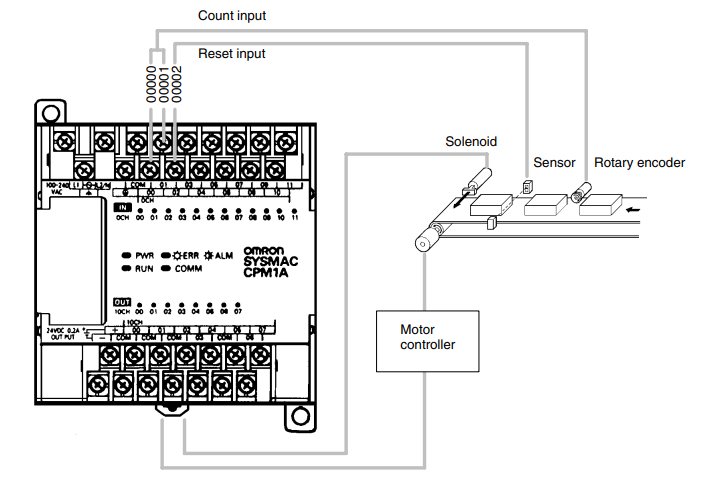

CP1E Encoder Wiring
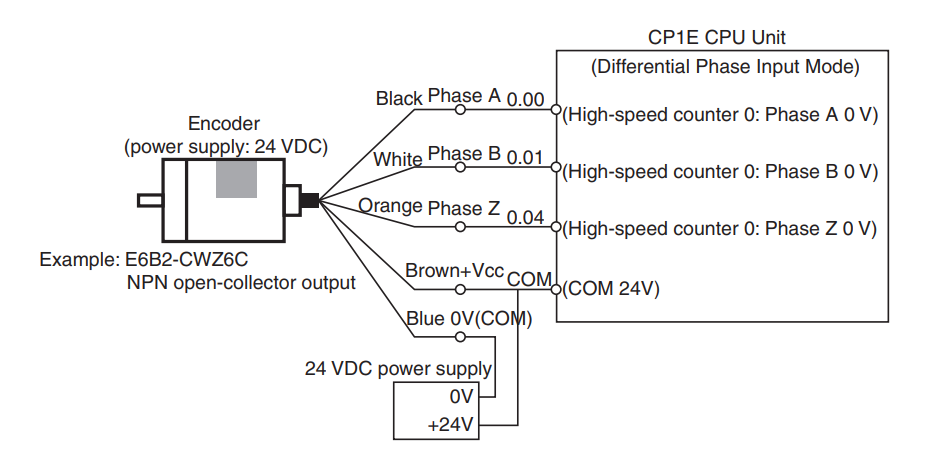
Difference in Input Terminals
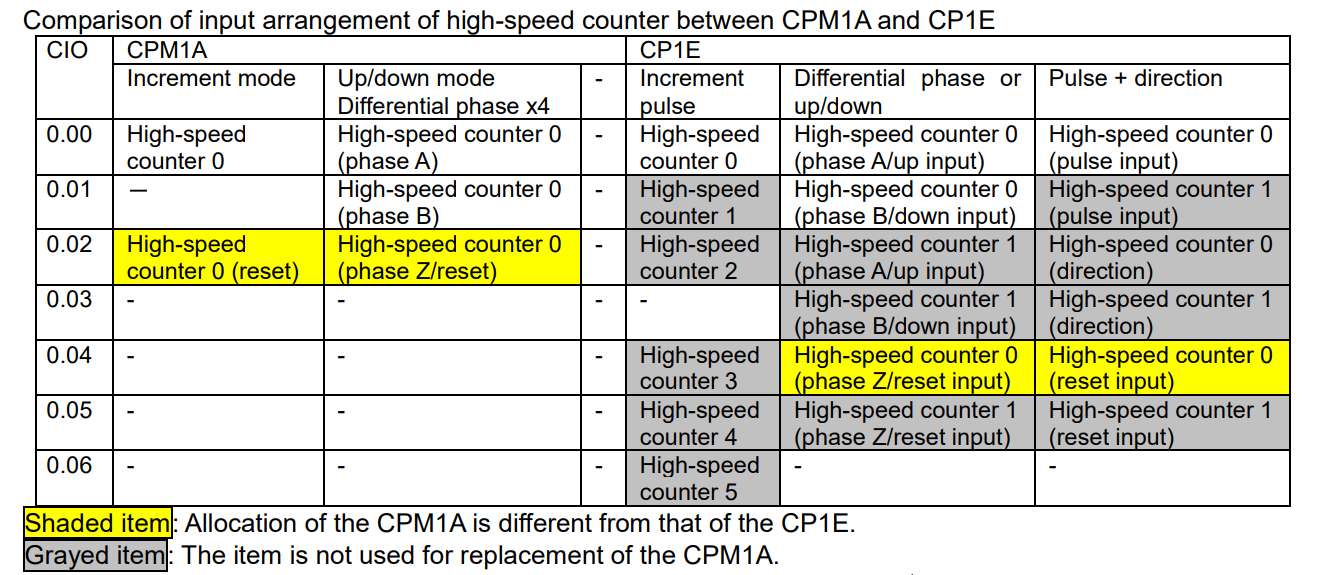
For high-speed counter 0, both CPM1A and CP1E use input terminals 0 and 1 for Phase-A and Phase-B of the encoder, respectively. The main difference is for Phase-Z, where input terminal 2 is used for CPM1A, while terminal 4 is used for CP1E.
Configuration Settings
When transitioning from the CPM1A to the CP1E, the PLC Settings is not automatically converted. Therefore, the settings for the high-speed counter for the new PLC should be done using CX-Programmer.
The table below illustrates the equivalent setup of CPM1A to CP1E. For instance, if the Input Setting for the CPM1A is Up/down mode, the equivalent Input Setting for the CP1E is Differential phase inputs (x4).
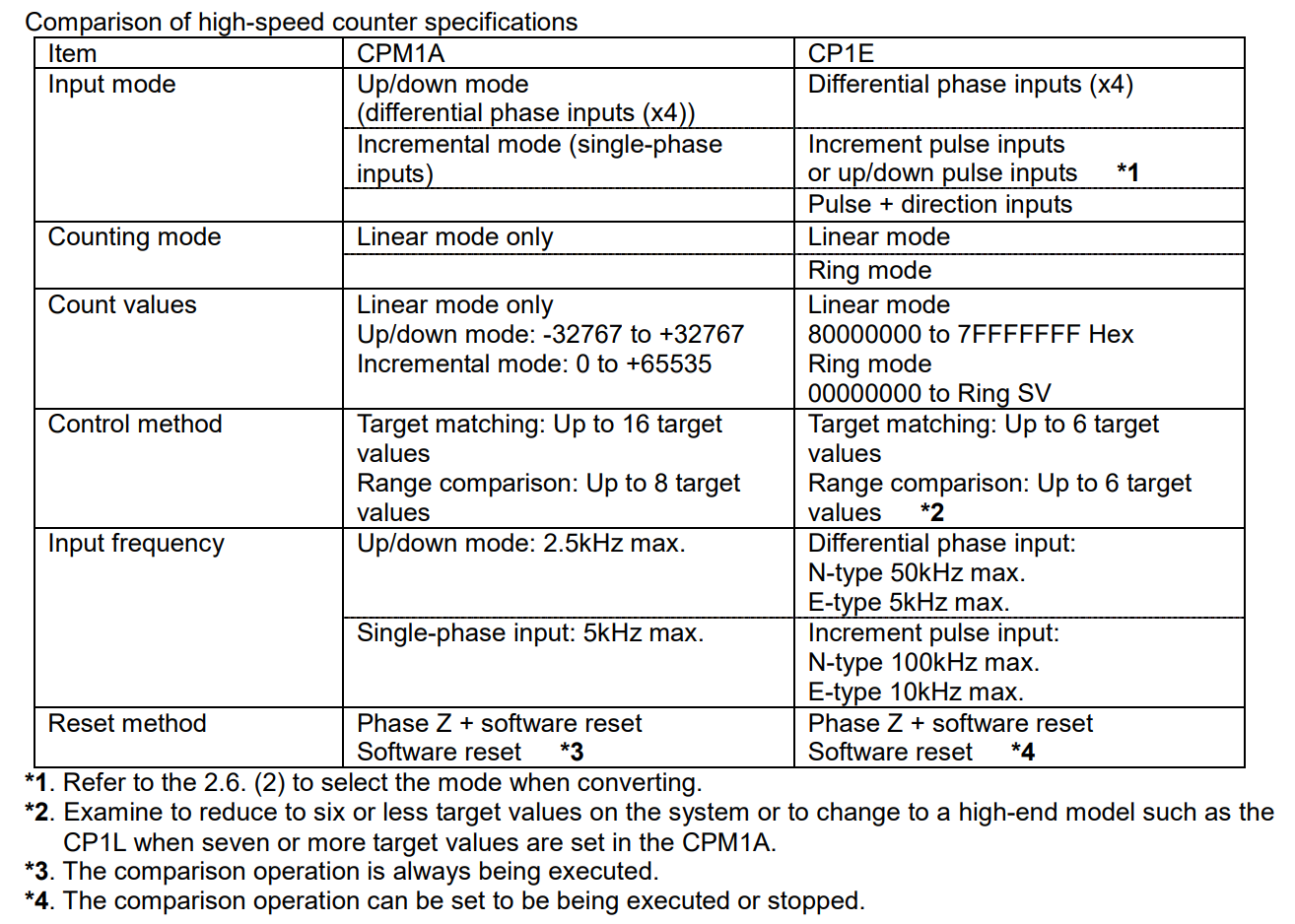
CX-Programmer Set Up Example (CPM1A to CP1E)
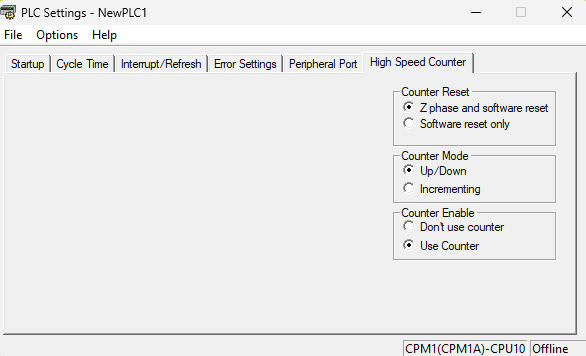
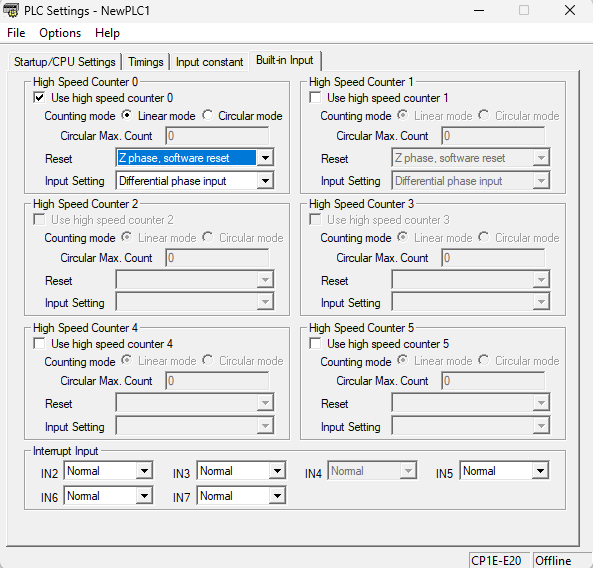
The first image shows an encoder setup for a CPM1A while the second image shows its equivalent setup on CP1E.
High-speed Counter
Memory Addressing
Some crucial memory addresses are utilized when an encoder is employed in a system, such as the High-speed Counter Reset Bit and the high-speed counter present value (PV). When replacing a CPM1A, ensure these addresses are updated in the PLC program with respect to the new PLC, in this case, CP1E.
The table below shows the CPM1A's address and its CP1E equivalent.
CPM1A |
CP1E |
|
High-speed Counter Reset Bit 0 |
SR 252.00 |
A531.00 |
High-speed Counter PV 0 |
SR248/SR249 |
A270 |
Data Formats
The values from the high-speed counter PV are commonly utilized in BCMP(068) and CTBL instructions. The data formats for these values for CPM1A are BCD, whereas for CP1E, they are BIN. Consequently, when transitioning to CP1E or CP1L, the values from these memory addresses must be converted from BCD to BIN before transferring them to the BCMP(068) and CTBL instructions. Failure to do so could lead to incorrect data comparison due to differences in data format.
Conclusion
The CPM1A, widely employed until its discontinuation in 2015, remains visible on machines today due to its robustness. Should the need for replacement arise, either for an upgrade or due to breakdown, determining the most suitable replacement becomes crucial.
A prevalent choice for replacing a CPM1A is either the CP1E or CP1L PLCs. Many machines equipped with a CPM1A often feature an encoder. Establishing proper configuration settings, electrical wiring, employing a high-speed counter, changing the program's memory addresses, and converting values into the correct data formats are essential steps when connecting an encoder to a CP1L or CP1E PLCs.